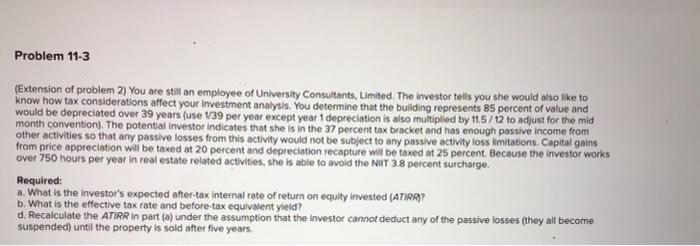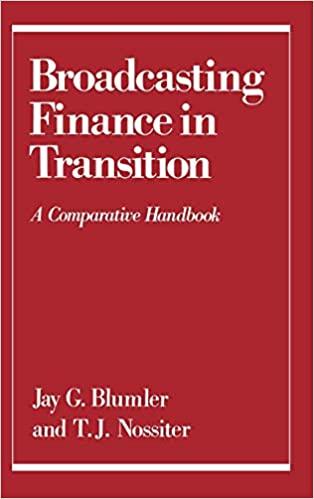(Extension of problem 2) You are still an employee of University Consultants, Limited. The investor tells you she would also like to know how tax considerations affect your investment analysis. You determine that the bullding represents 85 percent of value and would be depreciated over 39 years (use 1/39 per year except year 1 depreciation is also multiplied by 11.5/12 to adjust for the mid month convention). The potential investor indicates that she is in the 37 percent tax bracket and has enough passive income from other activities so that any passive losses from this activity would not be subject to any passive activity loss limitations. Capital gains from price appreciation will be taxed at 20 percent and depreciation recapture will be tawed at 25 percent. Because the investor works over 750 hours per year in real estate related activities, she is able to avoid the NiIT 3.8 percent surcharge. Required: a. What is the investor's expected after-tax internal rate of return on equity invested (ATIRA)? b. What is the effective tax rate and before-tax equivalent yleid? d. Recalculate the ATIRR in part (a) under the assumption that the investor cannot deduct any of the passive losses (they all become suspended) until the property is sold after five years. (Extension of problem 2) You are still an employee of University Consultants, Limited. The investor tells you she would also like to know how tax considerations affect your investment analysis. You determine that the bullding represents 85 percent of value and would be depreciated over 39 years (use 1/39 per year except year 1 depreciation is also multiplied by 11.5/12 to adjust for the mid month convention). The potential investor indicates that she is in the 37 percent tax bracket and has enough passive income from other activities so that any passive losses from this activity would not be subject to any passive activity loss limitations. Capital gains from price appreciation will be taxed at 20 percent and depreciation recapture will be tawed at 25 percent. Because the investor works over 750 hours per year in real estate related activities, she is able to avoid the NiIT 3.8 percent surcharge. Required: a. What is the investor's expected after-tax internal rate of return on equity invested (ATIRA)? b. What is the effective tax rate and before-tax equivalent yleid? d. Recalculate the ATIRR in part (a) under the assumption that the investor cannot deduct any of the passive losses (they all become suspended) until the property is sold after five years







